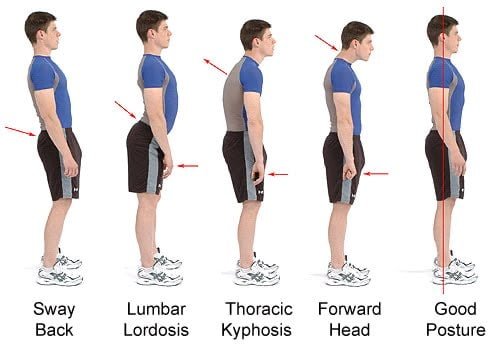In the realm of fitness, much attention is often given to visible muscles like the abs, biceps, and glutes. However, there’s an unsung hero in our muscular system that deserves equal focus – the upper back. Comprising major muscles like the trapezius, rhomboids, and latissimus dorsi, the upper back plays a pivotal role in our overall health and well-being.
Having a strong upper back is not just about aesthetics or achieving that coveted V-shaped torso. It’s about improving posture, enhancing athletic performance, and warding off the all-too-common back pain. Moreover, in an era where many of us are hunched over computers and smartphones, working on our upper back muscles is more important than ever.
But what if you can’t hit the gym? No worries! This article will guide you through effective ways to build your upper back muscles right at home. So, get ready to bid goodbye to back weakness and say hello to strength, stability, and improved posture.
Anatomy of the Upper Back
Understanding the upper back muscles is essential for effectively targeting and strengthening this area of the body. Here’s a breakdown of the key muscles involved:
Trapezius (Traps)

- Location: The trapezius is a large, triangular muscle that spans the upper back, neck, and shoulders.
- Function: It plays a crucial role in shoulder movement and stability, as well as in maintaining proper posture.
- Divisions: The trapezius can be divided into three regions: upper traps, middle traps, and lower traps, each with specific functions.
Rhomboids
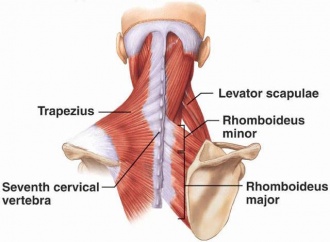
- Location: The rhomboids are situated beneath the traps and between the shoulder blades.
- Function: They retract the scapulae (shoulder blades) toward the spine and help maintain proper shoulder alignment.
- Types: There are two rhomboid muscles: rhomboid major and rhomboid minor.
Rear Deltoids
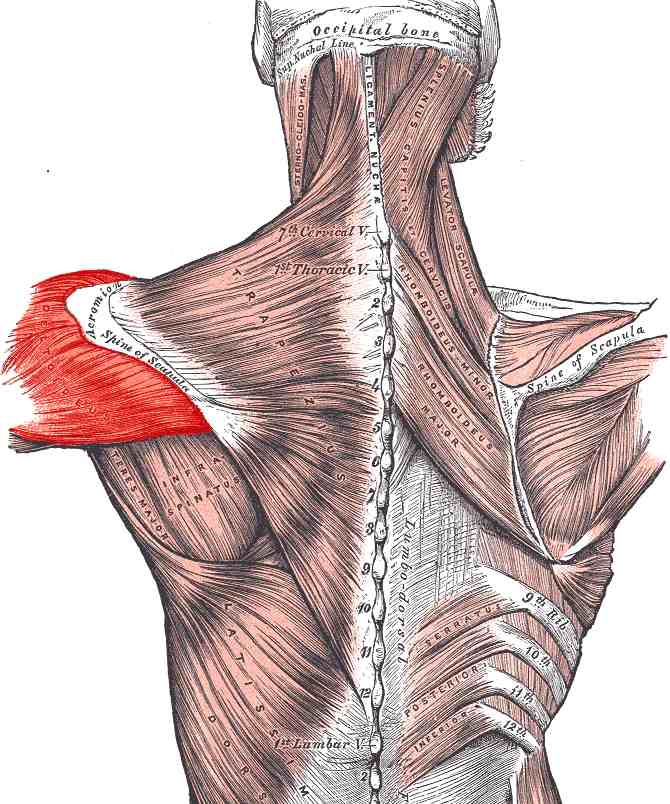
- Location: The rear deltoids, or posterior deltoids, are located at the back of the shoulders.
- Function: They are responsible for shoulder extension and horizontal abduction, contributing to overall shoulder stability and strength.
- Importance: Developing the rear deltoids is crucial for balanced shoulder development and preventing shoulder imbalances.
Levator Scapulae
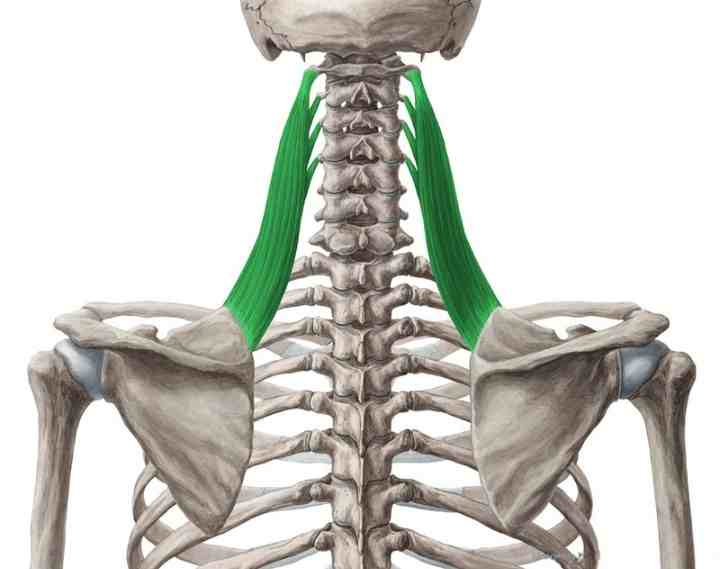
- Location: The levator scapulae are located along the sides of the neck, connecting the cervical spine (neck) to the shoulder blades.
- Function: These muscles elevate the scapulae, assisting in movements like shrugging the shoulders and tilting the head to the side.
Serratus Anterior
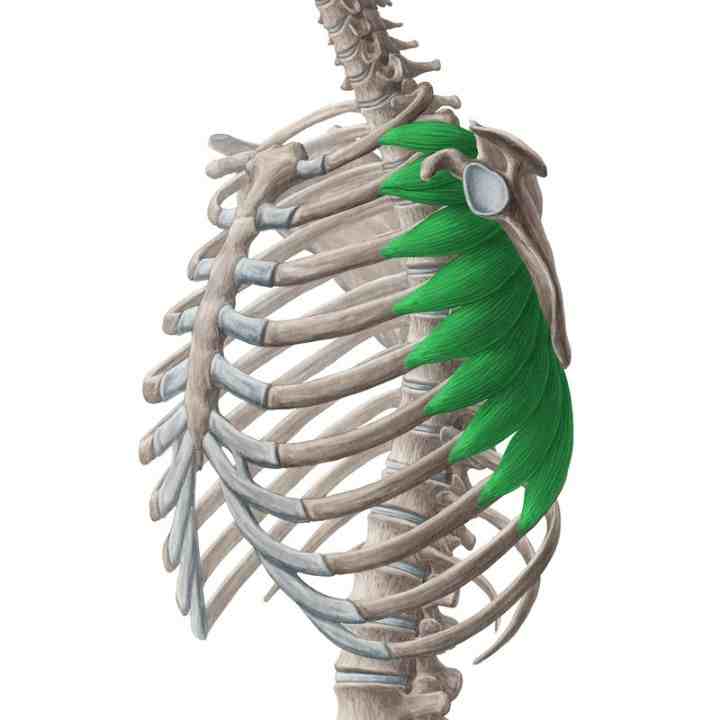
- Location: Although primarily located on the side of the ribcage, the serratus anterior also contributes to the upper back region.
- Function: It plays a role in stabilizing the scapulae against the ribcage, facilitating movements like pushing and reaching overhead.
- Importance: A strong serratus anterior helps maintain proper shoulder mechanics and contributes to overall shoulder health.
Understanding the anatomy of the upper back is essential for designing effective workouts that target these muscles and ensure safe and proper exercise execution. It’s also helpful for identifying the causes of upper back pain and addressing them appropriately.
Equipment-Free Exercises
Here are some effective bodyweight exercises that target the upper back muscles;
Reverse Snow Angels

- Lie face down on the floor with arms at your sides and palms facing down.
- Keeping your arms straight, lift them off the ground and sweep them up over your head until your hands nearly touch.
- Sweep your arms back down to your sides, maintaining a slight lift off the floor throughout the movement.
- Perform 3 sets of 10-15 repetitions.
Wall Slides
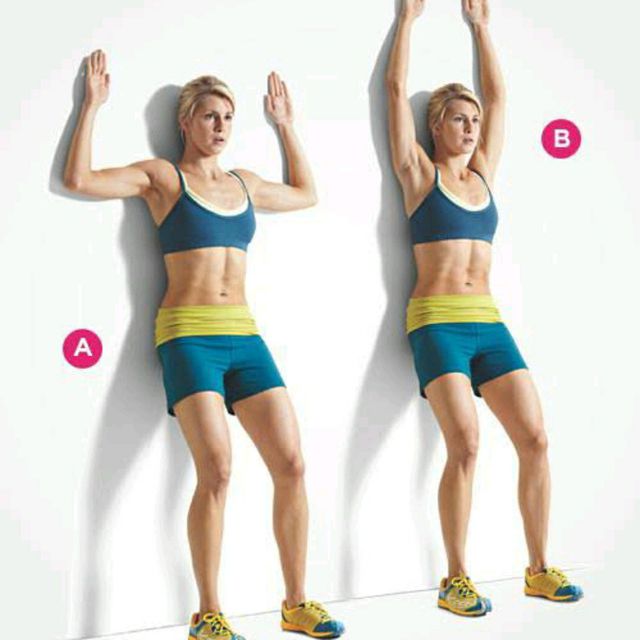
- Stand with your back against a wall, feet shoulder-width apart.
- Place your arms against the wall in a “W” position with elbows bent at 90 degrees.
- Slide your arms up the wall, straightening them above your head.
- Slide back down to the starting position, keeping contact with the wall at all times.
- Aim for 3 sets of 10-15 repetitions.
Doorway Stretch
- Stand in a doorway with your arms on the door frame, elbows at about shoulder height.
- Lean forward until you feel a stretch in your chest and front shoulders.
- Hold the stretch for 20-30 seconds, then relax.
- Repeat the stretch 2-3 times.
Inverted Rows (using a sturdy table)
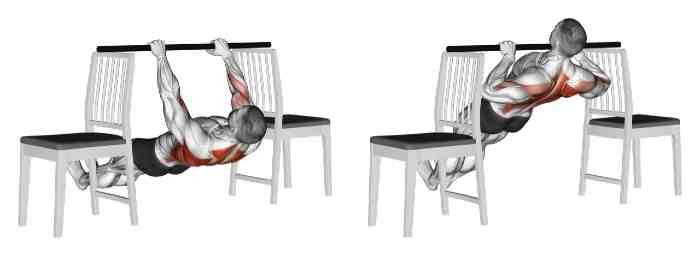
- Lie underneath a sturdy table with your chest directly under the edge.
- Grab the table edge with an overhand grip, hands shoulder-width apart.
- Keep your body straight, heels on the ground, and pull your chest up to the table edge.
- Lower yourself back down with control.
- Complete 3 sets of 8-12 repetitions.
YTWL Exercises
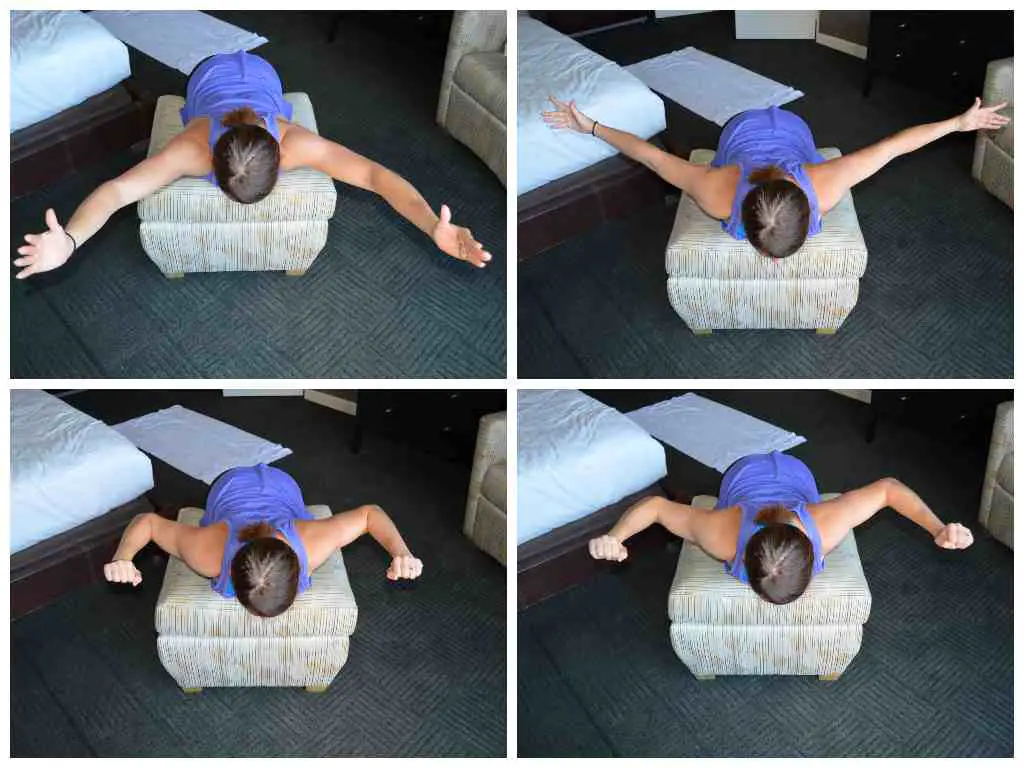
- Lie face down on the floor or an exercise bench.
- Lift your arms and torso off the ground, forming a “Y” with your body and arms.
- Move into a “T” by bringing your arms straight out to the sides.
- Transition to a “W” by bending your elbows to 90 degrees.
- Finally, form an “L” by rotating your arms so your fists point forward.
- Perform 8-10 repetitions for each letter shape.
Remember, maintaining proper form is crucial to prevent injury and maximize the benefits of each exercise. Ensure that you engage your core throughout the exercises and move with control, avoiding any jerky motions. It’s also important to breathe steadily, exhaling during the effort phase of the exercise.
Dumbbell Exercises
Here are some dumbbell exercises specifically designed to target the upper back muscles;
Bent-Over Dumbbell Row
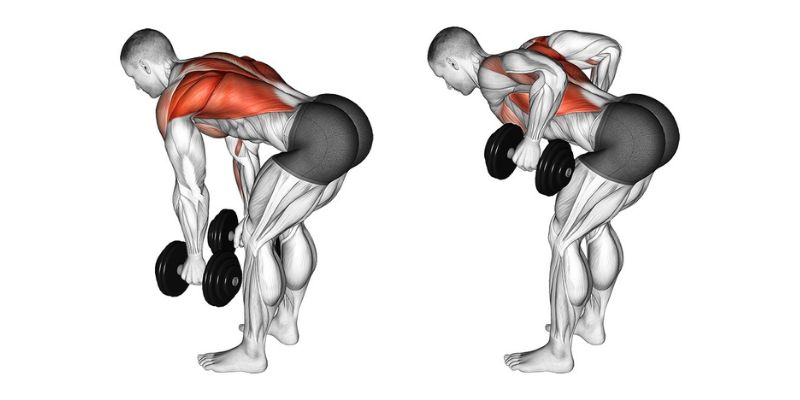
- Stand with your feet shoulder-width apart, knees slightly bent.
- Hinge at the hips to lower your torso until it’s almost parallel to the floor, arms hanging directly from the shoulders and palms facing each other.
- Brace your core and ensure your back is straight.
- Pull the dumbbells towards your hip, keeping your elbows close to your body and squeezing your shoulder blades together at the top of the movement.
- Lower the weights slowly back to the starting position.
- Aim for 3 sets of 8-12 repetitions.
Dumbbell Shrugs

- Stand upright with your feet shoulder-width apart, dumbbells at your sides, palms facing inwards.
- Keeping your arms straight, lift your shoulders as high as possible towards your ears.
- Pause at the top for a moment, then lower your shoulders back down.
- Perform 3 sets of 10-15 repetitions.
Renegade Row
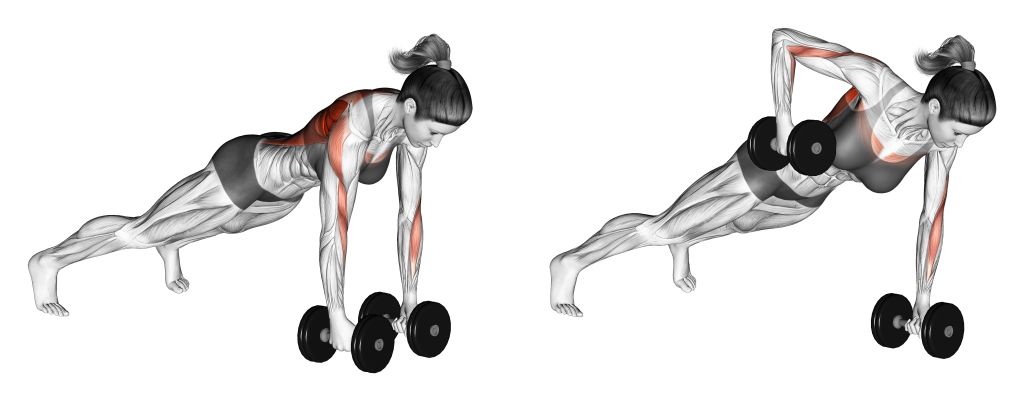
- Start in a high plank position with a dumbbell in each hand, positioned directly under your shoulders.
- Keep your body in a straight line from head to heels, core engaged.
- Row one dumbbell up towards your waist, keeping your elbow tucked in.
- Lower the dumbbell back to the ground and repeat on the other side.
- Complete 3 sets of 6-8 repetitions per side.
Single-Arm Dumbbell Row

- Place your right knee and right hand on a bench, keeping your back parallel to the ground.
- Hold a dumbbell in your left hand with a neutral grip, arm extended.
- Pull the dumbbell straight up to the side of your chest, keeping your torso stationary.
- Lower the dumbbell back to the starting position.
- After completing the set, switch sides.
- Aim for 3 sets of 8-12 repetitions per arm.
Dumbbell Pullover
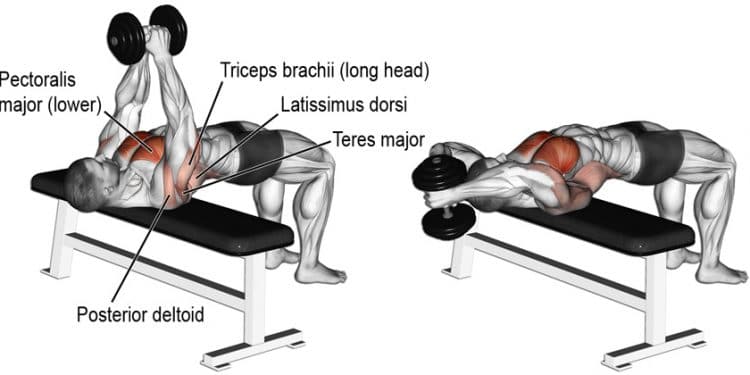
- Lie on a bench with your upper back and shoulders firmly placed on the surface.
- Hold a dumbbell with both hands above your chest, arms fully extended.
- Keeping your arms straight, lower the dumbbell back and over your head until your upper arms are in line with your torso.
- Pull the dumbbell back to the starting position.
- Perform 3 sets of 8-10 repetitions.
Remember to start with a weight that allows you to maintain proper form throughout the exercises. It’s better to use lighter weights and perform the movements correctly than to use heavier weights and risk injury.
Resistance Band Workouts
Resistance bands are a versatile tool for strengthening the upper back muscles. They provide variable resistance, which can help improve muscle strength and endurance. Here are some resistance band exercises that target the upper back.
Bent-Over Rows
- Stand on the middle of the band with feet shoulder-width apart.
- Hinge at the hips and keep your back flat, chest up, and core engaged.
- Hold the ends of the band with both hands, palms facing each other.
- Pull the band towards your hips, bending your elbows and squeezing your shoulder blades together.
- Slowly return to the starting position and repeat.
- Aim for 3 sets of 10-15 repetitions.
Standing Reverse Flies
- Stand with feet shoulder-width apart, slight bend in the knees, and band held in front of you at waist height.
- Grasp the band with both hands, palms facing each other, and arms slightly bent.
- Keeping your back straight, open your arms out to the sides, stretching the band until your shoulder blades squeeze together.
- Return to the starting position with control.
- Perform 3 sets of 10-15 repetitions.
Face Pulls
- Attach the band to a sturdy object at head height or hold it securely in a door jam.
- Grasp the ends of the band with palms facing each other.
- Step back to create tension in the band.
- Pull the band towards your forehead, flaring elbows out to the sides and squeezing your shoulder blades together.
- Slowly return to the starting position and repeat.
- Complete 3 sets of 10-12 repetitions.
Lat Pulldowns
- Secure the band overhead to a sturdy anchor point.
- Kneel or sit below the band, grabbing it with both hands wider than shoulder-width apart.
- Pull the band down towards your chest, keeping your elbows pointed down.
- Slowly release the tension and return to the starting position.
- Aim for 3 sets of 10-15 repetitions.
Band Pull-Aparts
- Stand with feet shoulder-width apart and hold the band with both hands in front of you at chest height.
- Keep your arms straight and pull the band apart, bringing your hands towards your chest.
- Squeeze your shoulder blades together as you pull.
- Slowly return to the starting position and repeat.
- Perform 3 sets of 15-20 repetitions.
Always start with a resistance level that allows you to complete the exercises with proper form. As you progress, you can increase the resistance by using a thicker band or shortening the length of the band you’re using.
Safety and Form Tips
Maintaining proper form during exercises is essential for preventing injuries and ensuring that you are effectively targeting the intended muscle groups. Here are some key guidelines to help you maintain proper form:
- Warm-Up and Cool Down: Always start with a warm-up to prepare your muscles and joints for exercise, and finish with a cool-down to help your body recover.
- Focus on Posture: Keep your spine in a neutral position, avoid rounding your back, and ensure your head is aligned with your spine throughout the exercise.
- Controlled Movements: Perform exercises with controlled, smooth movements to engage the correct muscles and avoid using momentum, which can lead to injury.
- Breathing: Breathe steadily and never hold your breath. Exhale during the most challenging part of the movement and inhale during the easier phase.
- Progress Gradually: Increase the intensity and complexity of your workouts gradually to avoid overloading your muscles and joints.
- Use Mirrors: Check your form in a mirror or record yourself to visually ensure you are maintaining proper alignment during exercises.
- Mind-Muscle Connection: Focus on the muscle you intend to work on and ensure it is actively engaged during the exercise.
- Seek Professional Guidance: If you’re unsure about your form or starting a new exercise, consider seeking advice from a fitness professional.
Is It OK to Do Calf Raises Everyday?
Remember, it’s better to do fewer repetitions with correct form than more reps with poor form. Always listen to your body and stop if you feel pain that is not just muscle fatigue. Proper form is the key to a safe and effective workout routine.
Progression and Variations
Progressively increasing the difficulty of exercises is a key principle in fitness known as progressive overload. This approach helps to continuously challenge your muscles, which is essential for growth and improvement. Here are some strategies to progressively increase the difficulty of your workouts:
- Increase Resistance: Gradually add more weight or use thicker resistance bands to increase the challenge.
- Increase Repetitions: Perform more repetitions of an exercise before taking a break.
- Increase Sets: Add more sets of an exercise to your workout routine.
- Decrease Rest Time: Shorten the rest periods between sets to make your workout more intense.
- Exercise Variations: Try more challenging variations of exercises to engage the muscles differently.
- Increase Frequency: Add another day of training to your weekly schedule.
- Slow Down the Motion: Perform exercises more slowly to increase the time your muscles are under tension.
- Hold the Position: Add isometric holds at the end of a movement to further challenge your muscles.
To keep your workouts interesting and challenging, you can also incorporate different exercise variations. Here are some ideas:
- Change the Grip: Alter your grip (e.g., wide, narrow, reverse) to target different muscle fibers.
- Modify the Range of Motion: Increase the range of motion to make an exercise more challenging.
- Create Instability: Use an unstable surface like a Bosu ball or stability ball to engage more stabilizing muscles.
- Combine Movements: Create hybrid exercises by combining two movements into one, such as a lunge with a bicep curl.
- Change the Angle: Perform exercises at different angles to target muscles from various directions.
- Use Tempo Changes: Incorporate slow negatives, explosive positives, or pause reps to vary the intensity.
Remember, it’s important to listen to your body and ensure that you’re not increasing the difficulty too quickly, which can lead to injury. Always prioritize proper form and technique over increasing the challenge of your workout.
FAQs
Q 1. How often should I train my upper back muscles for optimal growth?
Ans. Generally, training your upper back 2-3 times a week is recommended for the best results. However, it’s important to allow sufficient recovery time between workouts to prevent overtraining.
Q 2. What are the signs of overtraining the upper back, and how can I prevent it?
Ans. Signs of overtraining include muscle pain and stiffness, unexpected weight changes, anxiety, poor sleep, and frequent minor illnesses like colds. To prevent overtraining, ensure adequate rest, proper nutrition, and listen to your body’s signals.
Q 3. How do I ensure balanced development between my upper back and other muscle groups?
Ans. Incorporate a variety of exercises that target different muscle groups and maintain a balanced workout routine. Use both pushing and pulling movements to work all the relevant muscles evenly.
Q 4. What role does diet play in building upper back muscle mass?
Ans. Diet is crucial for muscle growth. Consuming enough protein, carbohydrates, and healthy fats, along with sufficient calories, is essential for muscle repair and growth.
Q 5. Are there any specific stretches I should do post-workout for the upper back?
Ans. Yes, post-workout stretches such as the child’s pose, cat-cow stretch, and doorway stretches can help relieve tension and improve flexibility in the upper back.
Q 6. How can I measure progress in my upper back development?
Ans. Progress can be measured by tracking increases in strength, improvements in posture, and changes in muscle size. Keeping a workout log and taking regular photos can also help monitor progress.
Q 7. Can upper back exercises help in relieving back pain or tension?
Ans. Yes, upper back exercises can help alleviate pain and tension by strengthening the muscles that support the spine and improving posture.
Conclusion
In conclusion, building upper back muscles at home is a feasible and rewarding endeavor that can lead to improved posture, enhanced strength, and a well-defined back. By understanding the anatomy of the upper back and incorporating a variety of exercises—ranging from bodyweight movements to resistance band workouts and dumbbell exercises—you can create a comprehensive workout regimen that suits your lifestyle and fitness goals.
Remember to maintain proper form, progressively increase the difficulty of your exercises, and stay consistent with your training. With dedication and the right approach, you can achieve significant gains in upper back strength and muscle development, all from the comfort of your own home.

Good day, and welcome to Fitthour. My name is Shubham Vijay, and I am a certified personal trainer and nutrition coach with 6 years of experience in the fitness industry. At Fitthour, we specialize in types of training, such as strength training, cardio, or HIIT, and our mission is to help clients achieve their fitness goals and improve their overall health.

